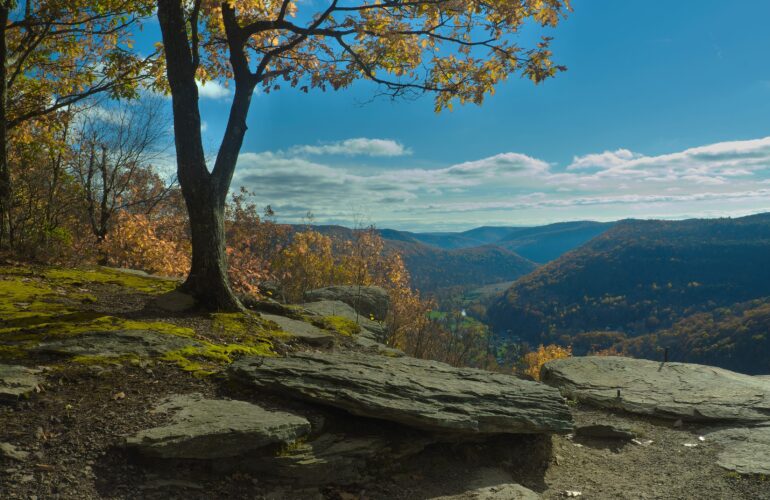
Photo by Tom Gallagher, Loyalsock State Forest
Written by Jim Hyland, Forest District Manager, Tioga State Forest
One of the traits Thomas Jefferson loved about his young Virginia neighbor, Meriwether Lewis, was his love for “rambling”, or walking long distances. Although he owned horses, Jefferson thought that people in his day had become too dependent on them, much like the way people need to drive cars and ATVs everywhere in today’s society, even for really short trips. Jefferson noted that the young Lewis pursued game for long distances barefoot, even in the snow, and through his constant close physical contact with the natural world, developed extraordinary skills as a woodsman.
Lewis, from time to time, walked from Virginia to Georgia to visit relatives, all the while navigating by the sun, stars and his internal compass. By 1804, the multi-talented, leather footed, thirty-year old Lewis was leading the greatest expedition in United States history. On May 14th, 1804, Lewis, with his partner William Clark and the rest of the crew known as the Corps of Discovery, began an upstream adventure from St. Louis Missouri, across the great plains, over the Northern Rockies, and then down the Columbia River to the Pacific Ocean and back. His orders were to keep extensive scientific journals (his dendrologic and zoologic descriptions are fascinating), establish relationships with native peoples, find a practical commerce route to the Pacific…..and most importantly, he needed to live to tell about it. Lewis did live, in fact, only one man out of the 35 original members of the Corps of Discovery died during the journey. Here’s what happened:
A few months into the journey, Sergeant Charles Floyd, from Kentucky, became unexplainably ill. His condition waxed and waned for a week or so, and then took a turn for the worse. Lewis, who was also the Corps doctor, tried everything he could to save Floyd, but he died nonetheless. He was buried high on a bluff above the Missouri River near what is now Sioux City, Iowa. Modern physicians speculate that Floyd was stricken by a burst appendix, and despite Lewis’ lamenting that he had not learned enough medical skills prior to the trip, Floyd would have died even in the best hospital (at the time) back in Philadelphia. In 1966, his gravesite became the first site to be entered in the National Registry of Historic Places.
Along the difficult journey there were no shoe stores, no shopping plazas, not even a Sheetz (hard to believe). The men are reported two have worn through a pair of moccasins every two days, and spent time repairing them most every evening. They made their own new moccasins and clothing from the bear, elk and other thick-skinned game they killed and butchered for subsistence along the way, and they tanned the hides with the brains of those animals. They even tangled with and killed grizzlies (43 documented).
Animal brains contain a chemical called lecithin, and it was used much the same way that the tannic acid derived from hemlock bark was used to soften and preserve leather in Pennsylvania’s tanneries. At Fort Clatsop, now coastal Oregon, where the expedition spent the winter of 1805-6, the men made 338 pairs of elk skin moccasins and other clothing in preparation for their return trip home. They left the Oregon Coast on March 23rd, 1806, and headed home. They arrived in St. Louis on September 23rd, 1806 to a “harty welcom”, as Lewis described it. The corps of Discovery had traveled nearly 8000 miles. They had thru-hiked the United States.
Then in 1809, one of history’s greatest ironies occurred: Meriwether Lewis was traveling along a well-established trail that led from Mississippi to Tennessee. It was called the Natchez Trace trail, and it was a known hunting ground for thieves and other ne’er-do-wells. Lewis was carrying $120.00 dollars with him, a near fortune at that time. Some historians think he was murdered for the money, others speculate that he may have committed suicide, having been suffering from a form of PTSD, or a deep depression resulting from his dislike of the “modern” lifestyle he was now obligated to live. He was found having died of a gunshot wound. The money was never recovered. After all those miles and all that risk, his most formidable enemy was society, he was 35 years old.




